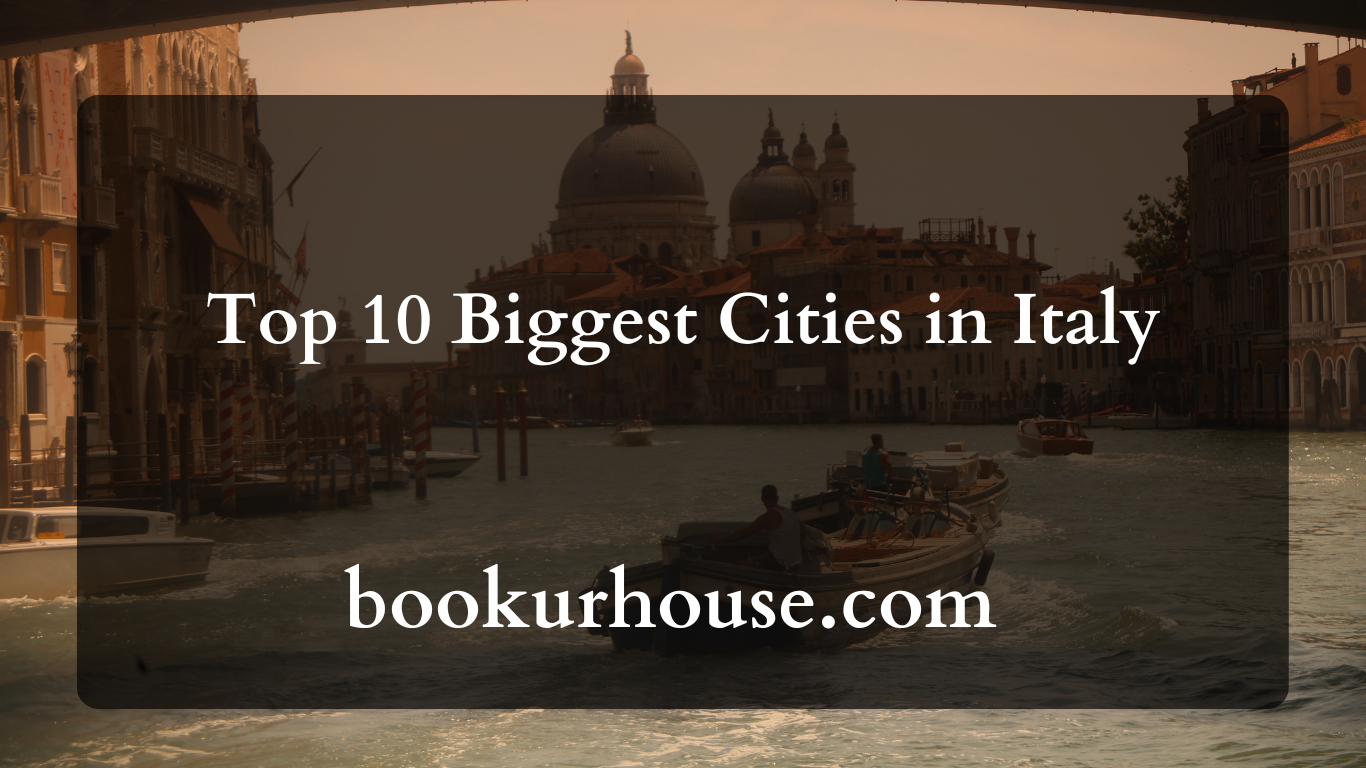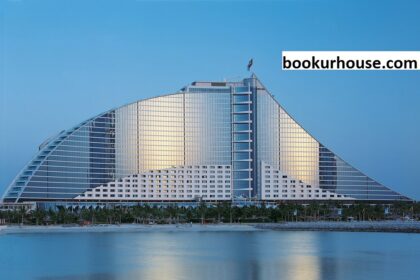Italy, with its rich history, energetic culture, and beautiful scenery, is home to some of Europe’s most notorious urban communities. From the heartfelt trenches of Venice to the old vestiges of Rome, every city offers a unique mix of history, craftsmanship, and gastronomy. This article explores the Top 10 Biggest Cities in Italy, investigating their appeal, importance, and what makes them stand out.
We explore the Top 10 Biggest Cities in Italy:
Rome
Known as the Everlasting City, Rome isn’t just the capital of Italy but also an immortal image of human progress. With experiences traversing more than 2,500 years, Rome is a mother lode of archeological marvels, including the Colosseum, the Roman Forum, and the Pantheon. Its status as the focal point of the Roman Empire has made a permanent imprint on world history, molding engineering, regulation, and culture for a long time. Today, Rome flawlessly mixes its old past with an energetic current way of life, offering guests an enthralling blend of magnificence and contemporary appeal.
Milan
As Italy’s financial force to be reckoned with, Milan is a powerful city famous for its style, money, and plan. Home to famous milestones, such as the Duomo di Milano and the Galleria Vittorio Emanuele II, Milan radiates complexity and style every step of the way. The city’s dynamic style scene draws in trailblazers from around the globe while its flourishing business locale pulses with energy and development. From top-notch shopping to perfect eating, Milan offers a cosmopolitan experience that enthralls guests and inhabitants alike.
Naples
Settled along the beautiful Bay of Naples, this southern pearl combines history, craftsmanship, and culinary pleasures. With its UNESCO-recorded memorable focus, lively road life, and vicinity to the old remnants of Pompeii and Herculaneum, Naples offers a brief look into Italy’s celebrated past. The city’s culinary scene is similarly unbelievable, with delicious dishes like pizza Margherita and spaghetti alla puttanesca starting here. Naples’ exceptional mix of confusion and appeal has motivated specialists, scholars, and voyagers for a long time, making it a must-visit objective for anybody investigating Italy’s different social scene.
Turin
Situated in the northwestern district of Piedmont, Turin is a city of refined class and social legacy. When the capital of the Realm of Savoy, Turin brags an abundance of building treasures, including the overwhelming Royal Palace of Turin and the notable Mole Antonelliana. The city is likewise known for its rich chocolate practice, with neighborhood rarities, such as gianduja and bicerin, pleasing sweet-toothed guests. Turin’s essential area close to the Alps makes it an entryway to a portion of Italy’s most stunning standard view, offering potential open doors for skiing, climbing, and outside experiences.
Palermo
As the capital of Sicily, Palermo is a lively embroidery of societies, flavors, and impacts. With its memorable Arab-Norman architecture, clamoring markets, and varied cooking, Palermo offers a tangible gala for the courageous explorer. From the Byzantine mosaics of the Palatine Chapel to the exuberant road food scene at Ballarò Market, the city’s different attractions mirror its rich multicultural legacy. Palermo’s warm environment, shocking shoreline, and easygoing climate make it a dazzling objective for those looking for sun, ocean, and Sicilian friendliness.
Genoa
Arranged along the rugged Ligurian coast, Genoa is a sea city saturated with history and sea customs. As possibly one of Europe’s biggest seaports, Genoa has been an entryway to the Mediterranean for some time, drawing in shippers, pilgrims, and travelers worldwide. The city’s memorable focus, a UNESCO World Legacy site, is a labyrinth of limited back streets, splendid castles, and secret patios ready to be found. Genoa’s rich social legacy is commended through its historical centers, displays, and yearly occasions, for example, the Genoa Worldwide Boat Show and the Euroflora blossom presentation.
Bologna
Renowned for its middle-age engineering, top-notch cooking, and esteemed college, Bologna is a city of immortal appeal and scholarly power. With its famous red-tiled rooftops and middle-aged towers, the memorable focus of Bologna is a UNESCO-recorded mother lode of structural marvels. The city’s culinary scene is similarly impressive, with neighborhood fortes like tortellini, mortadella, and ragù alla bolognese, enchanting food darlings from all over. Bologna’s energetic understudy populace mixes the city with energy and innovativeness, making it an exuberant center of culture, development, and educational greatness.
Florence
Generally viewed as the support of the Renaissance, Florence is a living historical center of workmanship, design, and human accomplishment. Home to show-stoppers by Michelangelo, Leonardo da Vinci, and Botticelli, the city’s social legacy is unrivaled in its wealth and importance. Florence’s memorable milestones charm guests with their magnificence and verifiable significance, from the notorious Duomo and Palazzo Vecchio to the Uffizi Gallery and Ponte Vecchio. Beyond its imaginative fortunes, Florence likewise offers a lively culinary scene, with customary Tuscan dishes, such as bistecca alla Fiorentina and ribollita, which are enchanting food lovers worldwide.
Venice
Named the Queen of the Adriatic, Venice is a city unlike others, with its overly complex channels, fancy royal residences, and immortal excellence. Based on an organization of islands in the Venetian Lagoon, the city’s extraordinary topography has molded its character and culture for north of a thousand years. From the magnificence of St. Mark’s Basilica and the Doge’s Palace to the tranquility of the Grand Canal and the Rialto Bridge, Venice’s famous milestones spellbind guests with their excellence and verifiable importance. Despite confronting difficulties, for example, rising ocean levels and overtourism, Venice remains an image of strength, imagination, and human resourcefulness.
Bari
Situated on the Adriatic shoreline of southern Italy, Bari is a lively port city with a rich history and social legacy. As the capital of the Apulia locale, Bari flaunts a beguiling old town, a clamoring waterfront, and a joyful road life that mirrors its Mediterranean soul. The city’s noteworthy milestones, including the Basilica of Saint Nicholas and the Swabian Castle, offer looks into its celebrated past.
At the same time, its lively food scene grandstands the best of Apulian cooking, from new fish and olive oil to hand-crafted pasta and cakes. With its warm environment, wonderful sea shores, and inviting air, Bari is an unlikely treasure ready to be found by courageous voyagers looking for a bona fide Italian experience.
FAQs
Which city is the capital of Italy?
Rome is the capital city of Italy.
What is the population of Milan, the second-largest city in Italy?
Milan, the second-largest city in Italy, has a population of approximately 1.4 million people.
How many of the top 10 cities are located in northern Italy?
Six of Italy’s top 10 most significant cities are in northern Italy.
Which city is known as the economic and financial capital of Italy?
Milan is often referred to as Italy’s economic and financial capital due to its significant contribution to its economy and financial sector.
What is the historical significance of Naples?
Naples is one of the oldest continuously inhabited cities in the world, and its rich history dates back to ancient times.
Which city in Italy is famous for its cuisine and street food culture?
Bologna is renowned for its cuisine, particularly its pasta dishes such as tagliatelle al ragù (Bolognese sauce) and tortellini.
What is the population of Rome, the largest city in Italy?
Rome, the largest city in Italy, has approximately 2.8 million people.
Which city in Italy is known for its fashion and design industry?
Milan is internationally recognized as a fashion and design capital. It hosts events such as Milan Fashion Week and is home to numerous fashion houses and design studios.
What are some famous tourist attractions in Florence?
Florence is famous for its Renaissance art and architecture, with notable attractions including the Uffizi Gallery, the Florence Cathedral (Duomo), and the Ponte Vecchio.
Conclusion
Considering everything, Italy’s ten main urban areas are energetic metropolitan habitats and archives of history, culture, and customs. From Rome’s greatness to Milan’s tastefulness, every city offers an exceptional look into Italy’s rich and various legacy, welcoming guests to investigate its fortunes and experience its magic firsthand. Whether you’re spellbound by old remnants, hypnotized by Renaissance craftsmanship, or desiring a sample of bona fide Italian food, these urban communities have something for everybody, making them fundamental locations for any voyager trying to uncover the excellence and appeal of the Bel Paese.












